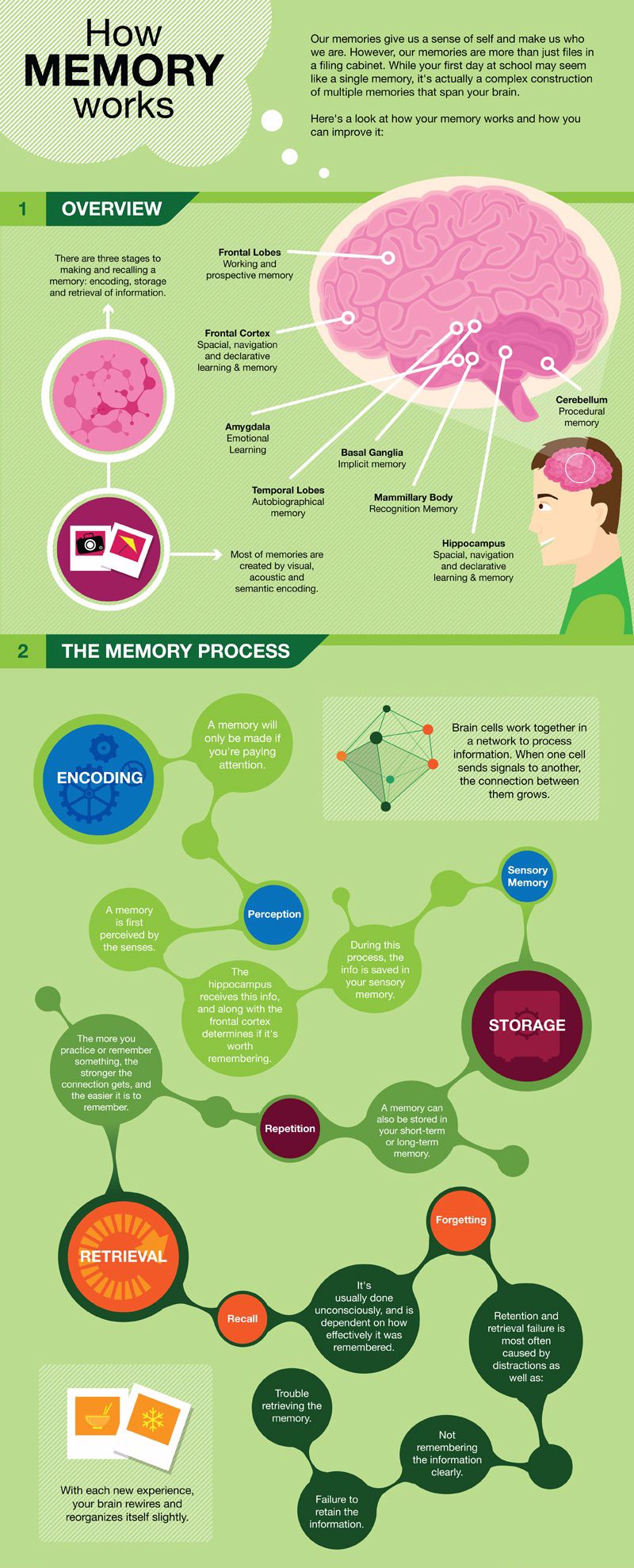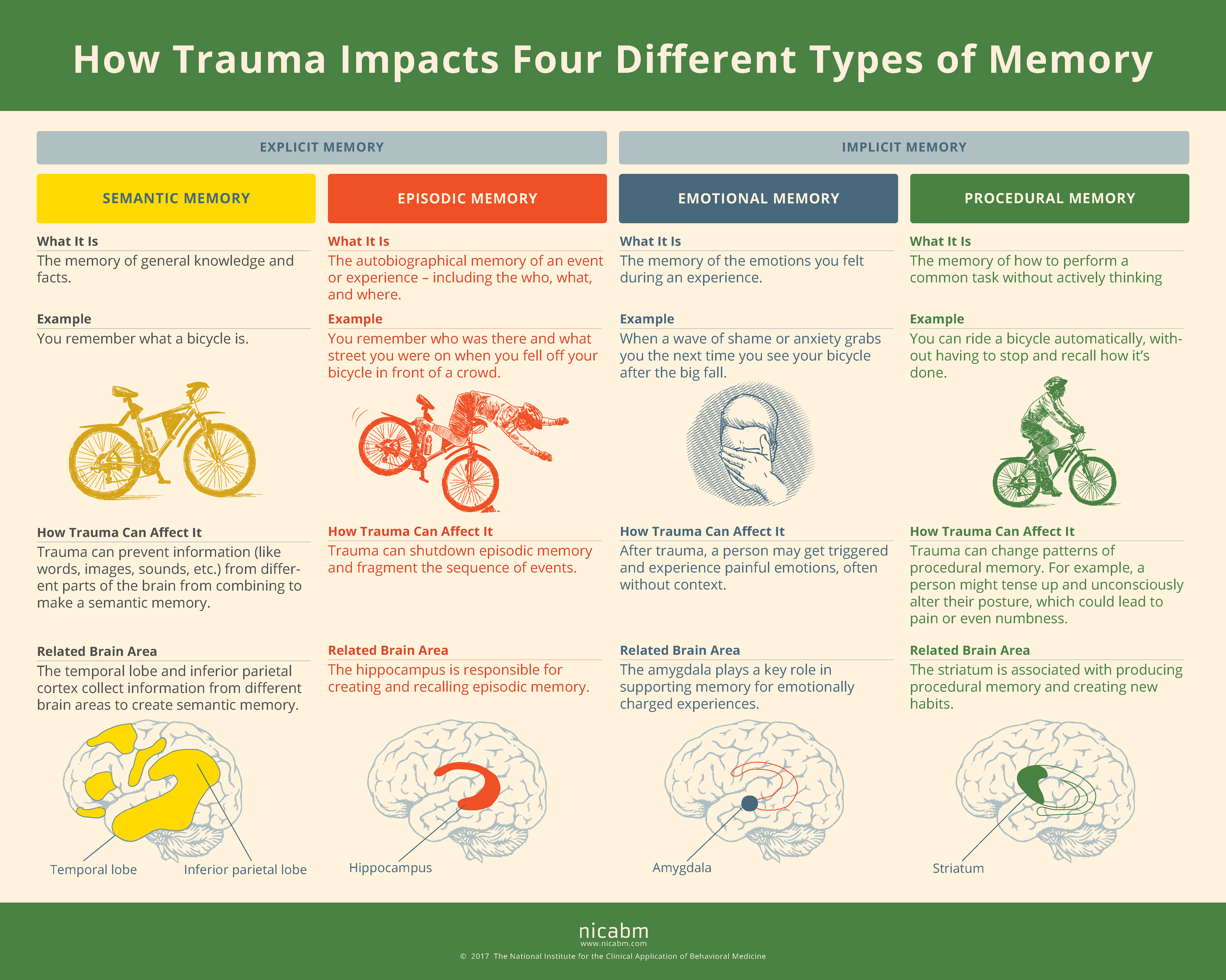Brain & Memory
Memory is the brain’s capacity to retain information over time. It is central to cognitive development as it helps us learn facts and skills. In addition, memory makes it possible to modify behavior in response to past experiences (e.g., we couldn’t really be true to “I’ve learned from my mistakes” if we didn’t remember what went wrong).
There are several different types of memory. The main distinction is between short-term and long-term memory.
Short-term or working memory information is stored for approximately a minute (assuming there is no rehearsal of the information), with the content being limited to about 7 unrelated items. The term “working” memory refers to the fact that we temporarily store information in this type of memory while we are working with or attending to it. The brain’s capacity for this type of memory increases considerably during early childhood until about age 7. After that, it does not appear to increase as much.
Long-term memory, as shown in the infographic below, is divided into two types (explicit and implicit) that each have two subtypes (semantic & episodic; emotional & procedural or skills). It is important to note that explicit memory is available to our conscious awareness, whereas implicit memory is mostly unconscious. When we think or talk about memory, we are usually referring to explicit memory. The brain’s capacity for long-term memory spikes during middle and late childhood.

Source: Adapted from “How Trauma Impacts 4 Types of Memory,” NICABM.com
While information stored in long-term memory can certainly last for a very long time, that does not automatically mean that it will endure forever. Two main factors affect memory duration. First, memories that we access more frequently stay in long-term memory far longer and become much stronger. Second, it has been found that our emotional response at the time that the memory was first encoded improves long-term retention. When something is experienced as stressful or emotionally exciting, it activates the amygdala, which in turn stimulates the hippocampus and cerebral cortex.
Research has shown that babies are not capable of explicit memory until after 6 months. Having said that, most adults have very few, if any, memories from the first three years of their lives. Even when we think that we do remember something from earlier than that, it is likely a false memory brought on by something we have been told or we saw in a video or a photograph. The same goes for elementary school children, who are much closer to their early years but still remember very little. It is believed that the reason for this is the immaturity of the prefrontal area of the brain at the time of early life events. As mentioned in the Brain Anatomy section, the prefrontal cortex does not fully mature until we are about 22-25 years of age.
As a neural process, memory is extremely complex and difficult to study in detail. We do know that it involves a number of different areas and structures in the brain, as seen in the infographic below.

Source: Adapted from “How Memory Works,” OnlineColleges.com
Trauma and Memory
As mentioned in the Adaptive Information Processing section under EMDR, traumatic experiences affect memory processing. The infographic below, from the National Institute for the Clinical Application of Behavioral Medicine, offers an easy-to-understand overview of how trauma affects each of the four long-term memory subtypes and which brain areas are related to the process.

